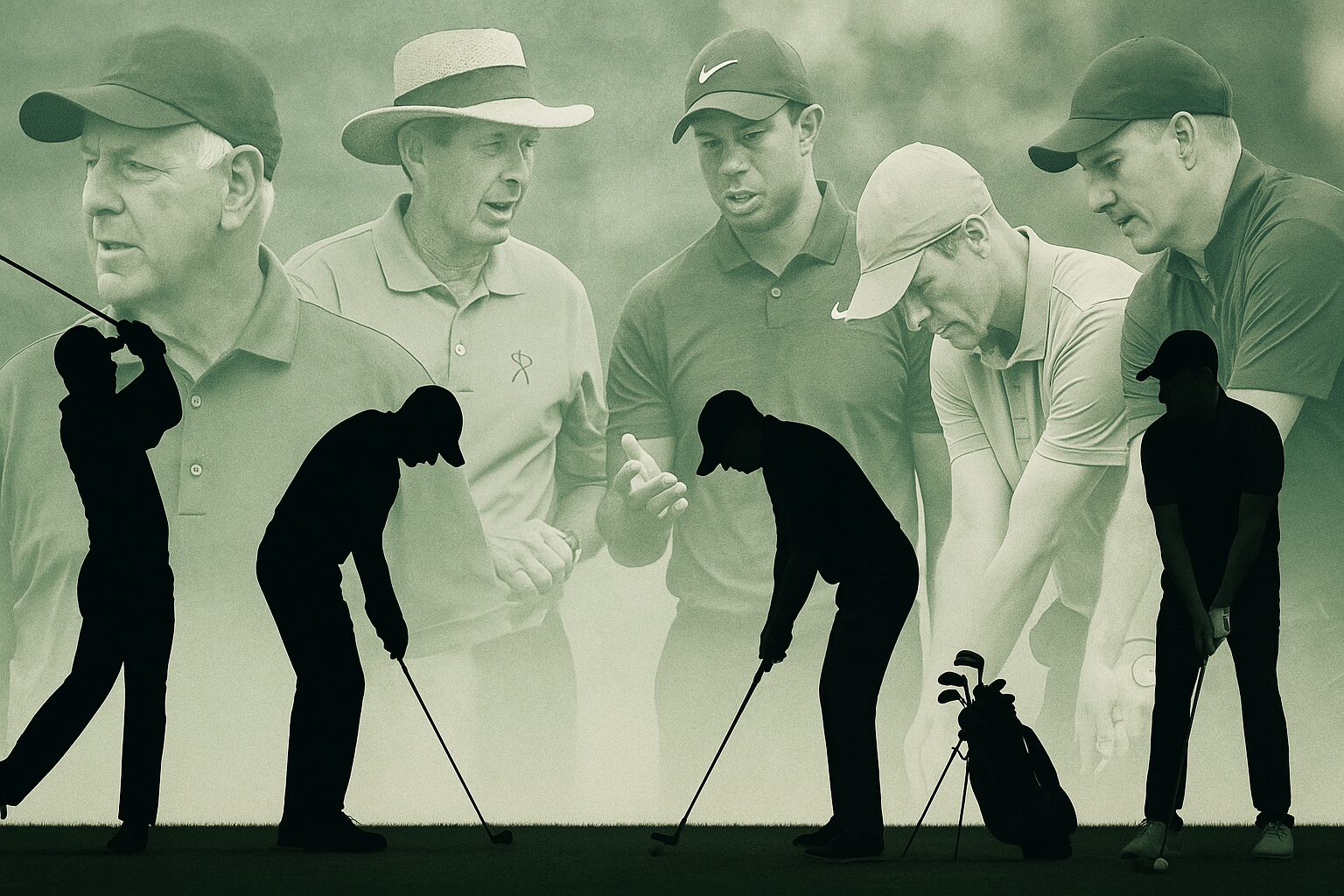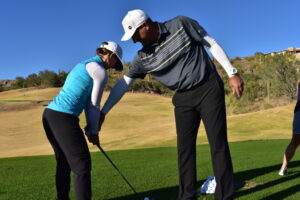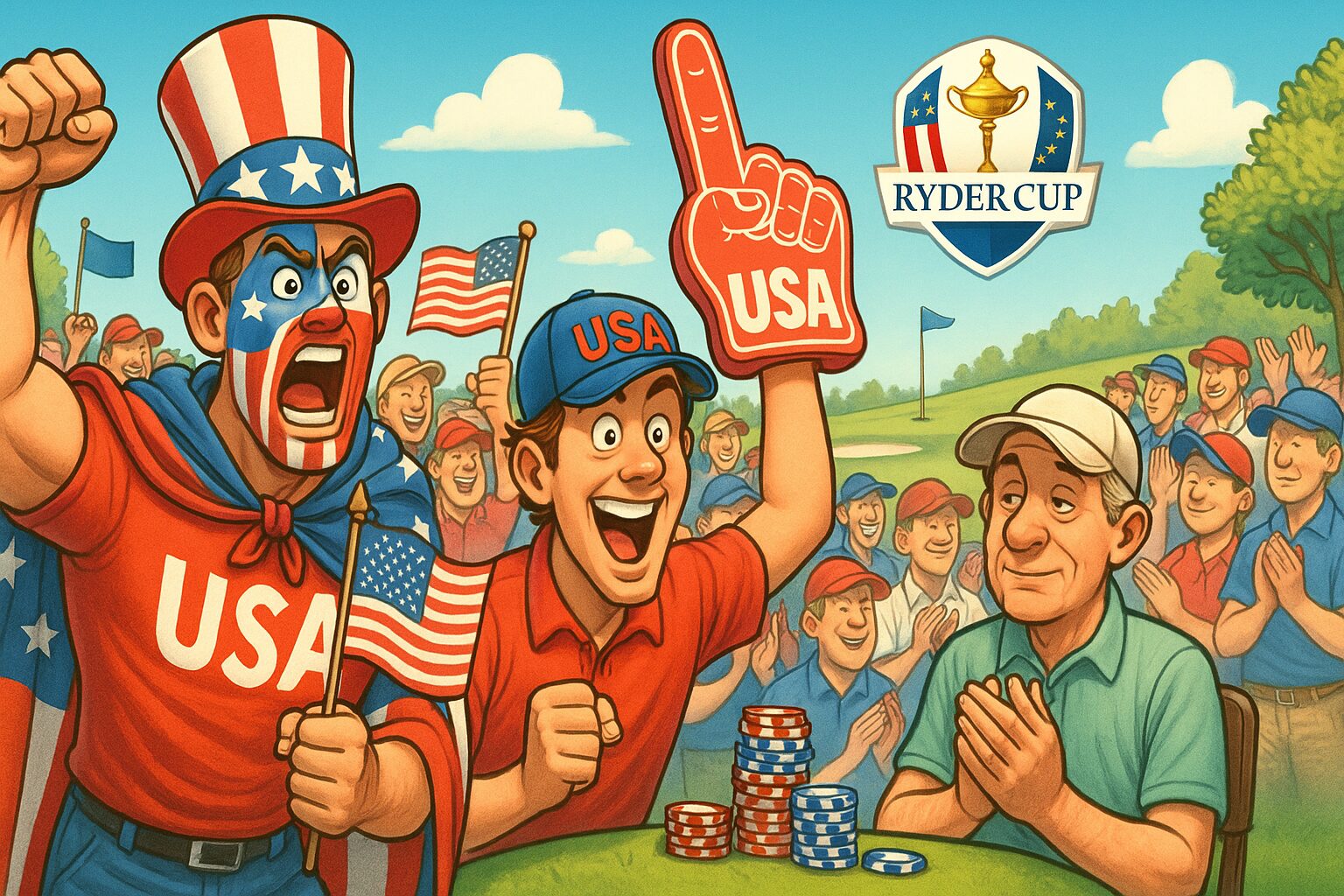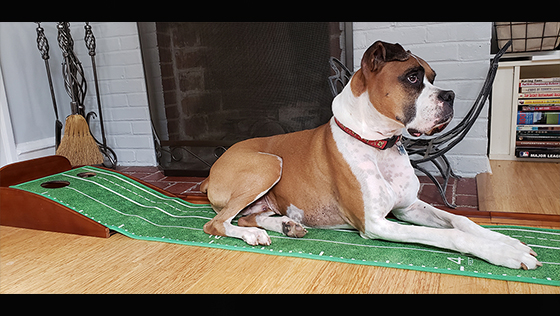Blog
Could Jon Rahm Have Finished the Memorial?

Back in July 2020, when the pandemic was in full swing, players that tested positive were allowed to continue to play at the RBC Heritage Classic. Granted there were no fans, granted they were grouped together, granted we know much more about the virus now than we did then…However, Could there have been another option for Jon Rahm this past weekend at Jack’s Tournament? I know this topic may be somewhat controversial. However, I believe there may have been an un-explored solution for Rahm this past weekend. One that the PGA may want/need to address in the coming months.
Let me set the scene for you: Rahm was cruising to a $1.7 million payday when suddenly, he was hit. Like a boxer, fighting Tyson in the late 80’s, he was struck with a left hook that floored him. After receiving the news in an awkward fashion departing the 18th green, with a 6 stroke lead going into Sunday, the golfer buckled over and bellowed “NO, Not Again”…He broke down in tears and left the course. He staggered to collect himself and then left with the PGA doctor into the tunnel. The spectators, gathered around the finishing hole, were stunned. The fans, including myself, watching at home waited with bated breath for any news of what was said. 5 Minutes. 10 minutes. 15 minutes and still, no word as to what was going on. I continued to watch. Guessing what happened. What was the tragedy that caused such a reaction? We all guessed what it could be. A death in the family? We hoped not. One thing was very clear…Rahm received some very devastating information.
Then the news: Rahm had tested positive for Covid and was forced to withdraw from the event.
Rahm was contact traced to someone who had tested positive, had been tested all week long. Symptom free, he was enroute to another PGA win and a big money paycheck. He had tested negative all week after being tested every day. He was playing some of the best golf we have seen from the young Spaniard. He was looking to go back to back! He felt and looked great.
Here’s the rub. Could the PGA have handled the situation better. Could they have escorted him off the course and told him off air? Could he have played the final round by himself (solo) with social distancing from the crowd? Should PGA tour golfers be forced to be vaccinated? All fair and legitimate questions. The answers allude me on all of these, but one thing remains obvious. As much as we all feel we are proverbially almost out of the woods with regards to the pandemic, the PGA tour was affected this weekend in a major way!
Spoiler Alert: If you have not watched the final round or do not know who won yet. STOP READING NOW:
In the end we ended up with a great final round on Sunday. In a sudden death playoff between Morikawa and Cantlay, on the first playoff hole, Cantlay drained a long-distance birdie while Morikawa missed an 8-footer. Cantlay was crowned the winner of the memorial for the 2nd time in his short career.
Late on Saturday night, Rahm posted an official comment on twitter saying that he was “very disappointed in having to withdraw from the Memorial Tournament.
Thoughts after today’s round pic.twitter.com/gWkBAWE42F
— Jon Rahm Rodriguez (@JonRahmpga) June 6, 2021
This is one of those things that happens in life, one of those moments where how we respond to a setback defines us as people. I’m very thankful that my family and I are all OK. I will take all of the necessary precautions to be safe and healthy, and I look forward to returning to the golf course as soon as possible.”
Jack Nicklaus, the host of the Memorial tournament and the designer of the golf course, wrote on his Twitter feed shortly after the third round: “Our hearts go out to Jon and his family as well as all the patrons who witnessed a spectacular round by Jon — only to be negated by this horrible pandemic our world continues to endure.”
He tested negative throughout the week, but unfortunately tested positive today.
— Jack Nicklaus (@jacknicklaus) June 5, 2021
I wish Jon a speedy recovery and hope he gets back to competition soon.
— Jack Nicklaus (@jacknicklaus) June 5, 2021
Nicklaus, who is 81 and contracted Covid-19 along with his wife, Barbara, in 2020, added: “I wish Jon a speedy recovery and hope he gets back to competition soon.”
All said and done golf fans around the world were left to wonder, like the Little Texas song, “What Might Have Been”. Until we see you again Jon, we all wish you the best. You will live to fight another day…
Blog
Legendary Golf Coaches and Their Signature Teaching Techniques
A Deep Dive into the Art of Golf Coaching. There are few sports as mentally challenging and technically nuanced as golf.

There are few sports as mentally challenging and technically nuanced as golf. The game demands a unique blend of physical precision, mental resilience, and strategic insight. As such, the role of a golf coach extends far beyond mere swing mechanics and course management. They also play a crucial part in shaping the mindset and overall approach of the player. In this comprehensive exploration, we delve into the profound impact that legendary golf coaches have had on the sport, highlighting their signature teaching styles that have produced world-class golfers and changed the face of golf across generations.

Butch Harmon: The Guru of Simplification
Butch Harmon is a name that resonates with any serious golf enthusiast. Known for his work with Tiger Woods, Phil Mickelson, and Greg Norman, Harmon’s coaching style is characterized by its simplicity. He focuses on making the swing as effortless as possible, keeping technical jargon to a minimum and emphasizing feel and natural movement. His approach has proven successful, with his students winning numerous major championships.

David Leadbetter: The Technician
David Leadbetter, renowned for his work with Nick Faldo, is often considered a technician in golf coaching. He pays great attention to minute details of the swing, believing that consistency and efficiency come from mastering the fundamentals. Leadbetter introduced the “A Swing,” a technique designed to simplify the golf swing while increasing efficiency and reducing strain on the body.

Hank Haney: The Strategist
Best known for his six-year coaching tenure with Tiger Woods, Hank Haney is a strategist at heart. Haney emphasizes the importance of course management and strategic decision-making, helping players choose the best shot for any given situation. His teaching style aims to help players understand their strengths and weaknesses, thereby maximizing scoring opportunities on the course.

Sean Foley: The Modernist
Sean Foley represents a new wave of golf coaching, blending traditional golf instruction with modern technology. Notably, he uses advanced tools like 3D motion analysis and Trackman to provide detailed feedback on swing mechanics. Foley, who has worked with players like Justin Rose and Tiger Woods, believes in a holistic approach, incorporating physical fitness and mental preparation into his coaching regimen.
Pete Cowen: The Philosopher
Pete Cowen, known for his work with major winners like Brooks Koepka and Graeme McDowell, approaches golf coaching from a philosophical perspective. Cowen’s teaching style emphasizes the importance of mental strength, discipline, and a strong work ethic. He believes in building a solid foundation, focusing on short game and wedge play, and then working up to full swings.
Legendary golf coaches like Butch Harmon, David Leadbetter, Hank Haney, Sean Foley, and Pete Cowen have left an indelible mark on the sport. Their unique teaching styles, whether it be simplification, technical precision, strategic insight, technological innovation, or philosophical approach, have helped shape the careers of many world-class golfers. Aspiring golfers and coaches can learn a great deal from their methodologies, applying these lessons to improve their own game or coaching style. After all, golf is not just about the swing; it’s about the approach, both on and off the course.
Blog
Ryder Cup Revelry: A Long Island Love Story (Sort Of)
Did the Ryder Cup fans on Long Island get too loud? Ty Webb talks the rowdy few vs. the quiet majority. Time for some course correction! 🏌️♂️

Well, another Ryder Cup is in the books. And while the scoreboard didn’t exactly sing a sweet American victory tune, the fans… oh, the fans. They certainly hit a high note, even if it was occasionally a little off-key and yelled with a thick Long Island accent.
For those of you who spent the weekend blissfully unaware of the happenings near the big city, let me set the scene. The ultimate transatlantic golf showdown landed in our backyard—specifically, on Long Island, New York. And when you put a major sporting event in a place known for a certain… enthusiasm (and perhaps a few loud opinions about how to drive on the LIE), things are bound to get interesting.
Now, before the entire Tri-State area cancels my membership (if I even had one), let me clarify. Golf fans, by and large, are the best. They appreciate a great shot, know when to clap, and generally understand that “Hole in One!” is not, in fact, an acceptable battle cry on the tee box.
But then there’s the Ryder Cup. It’s like a regular golf tournament went to a party, had too many energy drinks, and decided to wear a very loud, oversized foam Statue of Liberty hat.
The Long Island Effect
Let’s be honest. Long Island has a reputation. We’re talking about people who love their sports, are fiercely loyal, and occasionally view volume control as a suggestion, not a rule. They’re the kind of fans who make you feel like you should be ordering a hot dog with “the works” and shouting “Yankees!” even if it’s a golf tournament.
This weekend, that famed Long Island swagger was on full display. We saw a few… vocal individuals who clearly believed that the European players needed to be personally informed of every single American’s opinion regarding their putting stroke. Were there chants? You bet. Were there questionable fashion choices in red, white, and blue? Oh, absolutely. I’m pretty sure I saw one guy wearing a Captain America cape and trying to do a chest bump with a security guard.
My advice to those particular patrons? Learn a thing or two from the Zen of the fairway. As I always say, “Nirvana is not as far as you think.” Or, in this case, “Maybe just applaud the guy’s bogey and move on.”
The Quiet Majority
Here’s the thing that often gets lost in the hullabaloo, especially when a broadcast camera zeroes in on the three loudest guys in the grandstands: Most American golf fans were fantastic.
For every chap heckling a European player (which, by the way, is not what golf is about, fellas), there were a hundred others politely murmuring their appreciation, setting a fine example, and genuinely enjoying the world-class golf being played. They’re the silent, appreciative backbone of the gallery—the ones who understand that the real drama is between the golfer and the ball, not between the spectator and his blood alcohol level.
The U.S. is a big place, and our golf culture is deep and respectful. We don’t all act like we’re waiting for the Islanders to score a game-winner. In fact, most of us look at those over-the-top antics and shake our heads with a wry smile, thinking, “Oh, those guys. They must be from the Island.”
A Lesson in Chill
So, to my fellow Americans who might have earned us a reputation for being the loudest kids in the sandbox this weekend: Take a breath. Take a page out of my book. Be the ball. Let the good vibrations flow.
Next time, maybe we could exchange the constant cheering for the serene sound of a well-struck iron. And perhaps trade in that enormous foam finger for a nice, understated pair of sunglasses.
We love the passion, we love the patriotism, but let’s remember that golf is a gentleman’s game. Even when it’s played by guys who might still think a nine-iron is something you use to fight off traffic on the Southern State Parkway.
Keep it classy, America. And maybe next time, let’s win the Cup quietly—or at least, with a little less yelling and a lot more accurate putts.
Blog
Fore! Reasons Your Golf Cart Needs a Glow-Up (and How to Do It)

Let’s be honest. We all love the game, the fresh air, the occasional well-struck shot that makes us feel like a temporary Rory McIlroy. But what about the unsung hero of our weekend rounds? The trusty, sometimes rusty, golf cart. For too long, these magnificent machines have been relegated to mere utility. A box on wheels to get us from the pro shop to the first tee and back again. Well, I say no more! It’s time to infuse some personality, some pizzazz, some… us into our golf cart experience. Because a golf cart isn’t just a ride; it’s an extension of our golfing soul.
Think about it. We obsess over driver lofts, putter grips, and the perfect golf fashion ensemble. We want to look good, feel good, and play good. Why should our golf cart be any different? It’s often the first and last impression we make on the course, a mobile clubhouse, and sometimes, let’s be real, a temporary confessional after a particularly brutal triple bogey. So, if you’re ready to ditch the drab and embrace the fab, here are four compelling reasons your golf cart needs a serious glow-up, along with some hacker-approved tips to get you started.
1. Stand Out from the Rough (Literally)
Golf courses are a sea of sameness when it comes to carts. White, beige, maybe a splash of green if you’re lucky. But what if your cart announced your arrival with a flourish? Imagine pulling up to the tee box in a cart that screams “I’m here to have fun and maybe even sink a few putts!” A personalized cart isn’t just about aesthetics; it’s about making a statement. It’s about showing off your golf passion even before you hit your first drive.
Hacker Hack: Start with a custom paint job or some snazzy vinyl wraps. Think bold stripes, a subtle argyle pattern, or even a replica of your favorite golf course’s logo. For the truly committed golf enthusiast, consider some underglow LED lights. Not only do they look cool, but they also make those twilight rounds a whole lot more exciting. Don’t forget custom golf cart wheels and tires; they can completely transform the look and feel of your golf cart.
2. Boost Your On-Course Comfort (and Cool Factor)
Let’s face it, golf can be a long day. Hours spent traversing fairways, searching for wayward shots, and waiting for slow groups. Why not make those hours as comfortable as possible? A basic golf cart seat might suffice, but a souped-up one? That’s next-level golf life. We’re talking about enhancing your overall golf experience.

Hacker Hack: Invest in some premium, upholstered golf cart seats. Think marine-grade vinyl for durability and comfort. Add a custom steering wheel for better grip and a more luxurious feel. And for those scorching summer days, a golf cart fan is an absolute game-changer. You can even install a small cooler to keep your beverages chilled, making you the most popular person in your foursome. Consider a golf cart enclosure for those unexpected rain showers or chilly mornings, keeping you dry and warm.
3. Unleash Your Inner Technophile (and Score Better?)
Who says technology is just for your golf swing analyzer? Your golf cart can be a hub of innovation, making your rounds smoother, more enjoyable, and dare I say, potentially lowering your handicap. From GPS systems to rocking sound setups, there’s a world of golf cart tech waiting to be explored. We’re talking about smart golf accessories for your golf cart.
Hacker Hack: Integrate a golf GPS system directly into your dash. No more fumbling with your phone or rangefinder. Install a Bluetooth sound system so you can enjoy your favorite golf podcasts or pump up the jams between holes. And for the ultimate convenience, consider USB charging ports for your phone or other golf gadgets. Some golf carts even offer built-in ball washers and club cleaners, keeping your golf equipment pristine.
4. Express Your Golfing Personality (and Start Conversations)
Your golf cart is a canvas. It’s an opportunity to showcase your unique golf style and personality. Are you a traditionalist? A wild card? A minimalist? Your cart can reflect that. It’s a fantastic conversation starter and a way to connect with other golfers who appreciate a bit of flair. It’s all about golf cart customization and golf cart accessories that speak to you.
Hacker Hack: Personalize your golf cart with custom floor mats, a unique dash panel, or even a personalized license plate (check your local course rules first!). Add some fun decals or stickers that reflect your golfing sense of humor. A custom golf bag attachment can also add a touch of individuality. The possibilities for golf cart upgrades are endless, from practical additions like a sand bottle for divot repair to purely aesthetic touches.
So, next time you’re about to hop into that plain, run-of-the-mill golf cart, think about the potential. Think about the golf cart accessories, golf cart parts, and golf cart upgrades that can transform it into something truly special. Your golf cart isn’t just transportation; it’s an experience. It’s an extension of your golfing journey, and it deserves to shine as brightly as your best golf shot. Now go forth, hackers, and give your golf cart the glow-up it deserves!
-

 Product Review6 years ago
Product Review6 years agoThe Perfect Practice Putting Mat Review by Jason Tenzer
-

 Blog4 years ago
Blog4 years agoLoophole Rule Offers PGA Tour Pros a Mulligan
-

 Blog4 years ago
Blog4 years ago2021 Buyer’s Guide: The Top 10 Value Golf Balls For Distance & Feel
-

 Blog4 years ago
Blog4 years agoGolf Marriage Counselor
-

 Blog6 years ago
Blog6 years ago9 Biggest Chokes Of The Past Decade
-

 Product Review6 years ago
Product Review6 years agoTHE ADJUSTABLE IRONS: WALKING STICKS GOLF CLUBS
-

 Blog4 years ago
Blog4 years agoWhat Your Golf Clubs Say About You
-

 Equipment6 years ago
Equipment6 years agoOHK Sports Interview by Jason Tenzer



















